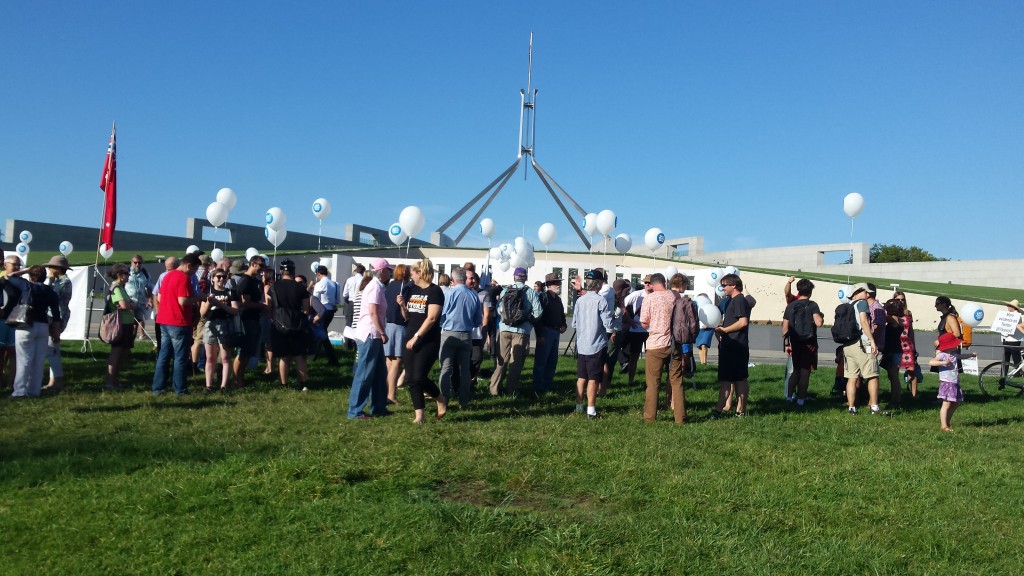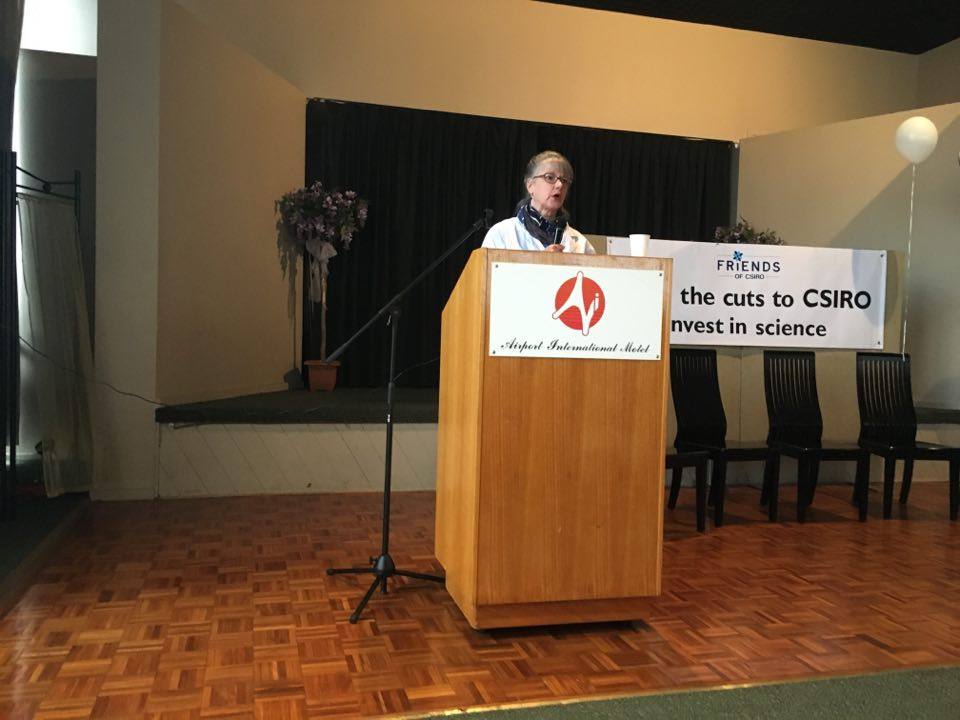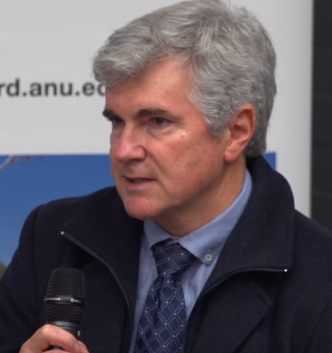
With an election just around the corner, I thought it would be timely to discuss some issues related to climate science policy, including the CSIRO job cuts, Great Barrier Reef bleaching and climate adaptation.
In February this year CSIRO announced they would be cutting 350 jobs across their divisions due to the $115 million of funding cuts in the 2014 budget, with the majority of those affected in the Oceans and Atmosphere division which play a crucial role in climate science modelling and observation; not just for Australia but the global science community. Most bewilderingly, the Australian Climate Council stated in a report that this move virtually guarantees the breaching of our national obligations under the Paris agreement. Naturally, the public outcry for this was rather immediate and severe, with rallies in most capital cities (I attended one in February in front of Parliament House) and the global science community at large responding with utter shock and condemnation. Labour recently responded by promising the restoration of $250 million to CSIRO’s budget, on top of a commitment to building a new $50 million research centre for the protection of the Great Barrier Reef. As nice a promise that is, it won’t completely heal the damage done over the past few years in which a total of 1200 CSIRO jobs have been cut.

I’ve had the privilege of attending quite a few public forums, speeches and events orbiting the issue of climate change policy and CSIRO cuts around ANU and Canberra. In one recent event, Dr Penny Sackett (former Chief Scientist of Australia) eloquently summed up the issues with this kind of action;
The way forward is not sacking the scientific messengers and the forward scouts…these job cuts are akin to putting on blindfolds before embarking on a long journey over rough and unfamiliar terrain.”

I spoke to her afterwards to discuss the kind of scientific culture this is breeding in Australia – one that is biased towards immediate industrial applications and neglects fundamental research. As she and a few CSIRO scientists at the event pointed out, CSIRO was founded not just with Australian industry in mind, but also the objectives of the Commonwealth and interests of the Australian people. Clearly, upholding the Paris Climate agreement is one such objective, but one might also notice that preventing the systematic bleaching of the Great Barrier Reef would probably also be at least of minor interest to Australians. Mind you we’re talking about literally the most severe bleaching event in the reef’s known history – 93% of the reef has been affected. A report in March this year also found that this event was made 125 times more likely due to climate change.

I’m not gonna go ahead and tell you who to vote for; making a well-informed decision on your preferred candidate is up to you. But, since most voters don’t bother going out of their way to inform themselves on political policy and agendas (looking at you, fellow Gen Z-ers!), I’ll go ahead and quickly summarise climate goals of each major political party for you.
- Liberal National Party – 23% renewables by 2020, 28% emissions reduction by 2030 (no long term goals). $2.55 billion for incentivising businesses to reduce emissions, and removing $1.3 billion from the Australian Renewable Energy Agency (ARENA) (Sources: 1 2)
- Australian Labor Party – 45% emission reduction and 50% renewable energy by 2030. No specific plan on how, but reinstating the emissions trading scheme (more on that in a bit) is on the agenda. Also plans on removing $1 billion from ARENA. (Sources: 1 2)
- The Greens – 90% renewables and 80% emissions reduction by 2030, fully retaining ARENA, additional $2.9 billion towards installing domestic battery storage for solar, and a further $250 million dedicated to smoothly phasing out coal power plants. (Sources: 1 2)
- Xenophon Team – Support current government’s renewable energy target (see first point). Doesn’t support Coalition’s direct action nor Labor’s carbon tax, and would rather introduce a “carrot and stick” Frontier Economics scheme. (Source: 1)
If you’re someone who’s passionate and rather concerned about climate change, you’ve likely already made up your mind. If however, you hadn’t given it much thought or were thinking of donkey voting…well hopefully you can make an informed decision by at least skimming over those dot points.
It’s worth quickly discussing the carbon tax/emissions trading idea though, since that’s rather contentious even amongst people in favour of climate change action. Liberal’s argue against it by noting how it increased electricity bills of families around Australia and its impact on industry profits. Indeed, the carbon tax did increase average weekly expenditure for families by about $10 a week, however various compensation measures were in place for those earning less than $80k a year (Sources: 1 2). This is an extremely small price to pay though when you realise that such schemes have been shown to consistently reduce emissions in almost 40 countries across the globe. Furthermore, an additional 50 countries committed to carbon pricing in the Paris agreement. (Source) If 90 countries think emissions trading schemes are a good idea, I’d probably tend to agree.

There is one last thing I’d like to bring up before closing this one off though; the issue of lacking climate adaptation policy. This came to my attention after attending a colloquium here at ANU in which Prof. Mark Howden Director of the Climate Change Center noted that no political party has proposed any climate adaptation policy (not even the Greens!). Now, whilst there was a “National Climate Resilience and Adaptation Strategy” published in December last year, hardly any action has proceeded from its release since. Hardly surprising since the report itself is a “mishmash of unfounded assertions, pretty graphics, excuses and sheepish acknowledgements”, as described by Kate Mackenzie from the Climate Institute.

A google news search for the government report finds exactly 6 articles, only 3 of which are from the past year and none referring to any regional or state developments towards adaptation.
This should be extremely worrying for Australians given that over 85% of us live on the coast, and the rest are most likely in bushfire prone areas. We need only look at the recent flooding disaster in Tasmania as an example of the kind of extreme weather events we’re going to need to get used to in the coming years.

Unfortunately in terms of this election, climate change policy as a whole has been drowned out from debates and discussions by health, schools; and of course, jobs and growth… so it’s no surprise that we’ve heard literally nothing at all on the topic of climate adaptation. Climate adaptation is just as important as emission reductions, and in the face of overwhelmingly more common and severe natural disasters on our shores, we’ve gotta take this more seriously. It’d probably help if we had some scientists doing climate monitoring research so we knew what to expect and need to do…
It definitely seems that when the words “climate change” and “politics” precede each other, headaches and frustration follow. This coming election however, taking steps in the right direction for the climate and environment is certainly possible – if the nation decides correctly. I suppose we’ll find out on Saturday whether the future is going to look bright, or scorching.
-A
Leave a Reply